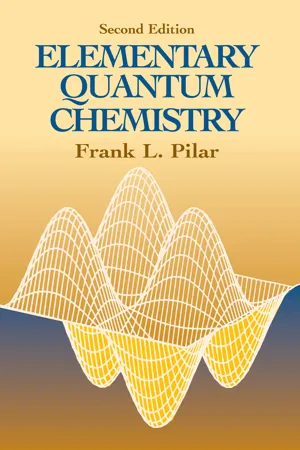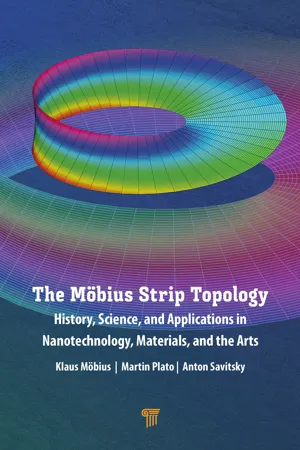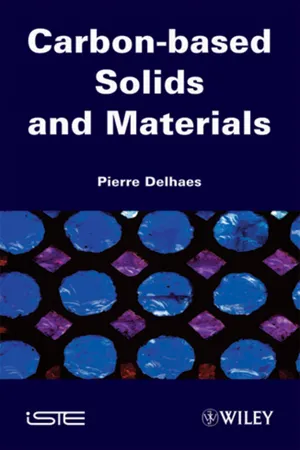Chemistry
Huckels Rule
Huckel's rule is a concept in organic chemistry that predicts whether a planar ring molecule will exhibit aromaticity. According to the rule, a molecule will be aromatic if it contains 4n + 2 π electrons, where n is a non-negative integer. Aromatic molecules are more stable and have unique properties due to their delocalized electron structure.
Written by Perlego with AI-assistance
Related key terms
Related key terms
1 of 4
Related key terms
1 of 3
3 Key excerpts on "Huckels Rule"
- eBook - ePub
- Frank L. Pilar(Author)
- 2013(Publication Date)
- Dover Publications(Publisher)
Sec. 13-5 .14-2 THE HÜCKEL APPROXIMATION FOR CONJUGATED HYDROCARBONSEmpirical evidence suggests that the chemical behavior of conjugated hydrocarbons may be accounted for on the basis of the so-called pi electrons for each pair of carbon atoms which are double-bonded in the classical formula. As early as 1931, E. Hückel2 showed that it was possible to describe conjugated hydrocarbons such as benzene by use of a quantum mechanical model which considered only the pi electrons. Today, the model has been greatly extended and its basis clarified.Consider a conjugated hydrocarbon containing m carbon atoms in a conjugated system; i.e., the carbon atoms form a chain which appears in the classical formula as an alternation of single and double bonds:where hydrogen atoms have been omitted for clarity. In addition, the treatment which follows is also applicable to molecules in which the conjugated system is cyclic—or in which a number of cyclic and noncyclic conjugated chains are linked. For neutral molecules, the number of pi electrons is equal to the number of carbon atoms in the conjugated system; when the number of carbon atoms is odd, the neutral species is a radical. Thus, the allyl radical CH2 =CH-CH2 · is a conjugated system of three carbon atoms and three pi electrons, a fact made more apparent by examining the resonance structuresThe basis set for the pi electron wavefunction consists of 2p AOs of carbon which are perpendicular to the plane of the molecule. These are generally referred to as “2pπ” AOs. The pi electron wavefunction for a molecule of 2N pi electrons is written as the single determinantwhere the {πi } are pi electron MOs given byThe {ϕr } are the 2pπ basis AOs, each centered on a different carbon atom of the conjugated chain. These AOs are treated as if they were strictly orthogonal; i.e., all overlap integrals - eBook - ePub
The Möbius Strip Topology
History, Science, and Applications in Nanotechnology, Materials, and the Arts
- Klaus Möbius, Martin Plato, Anton Savitsky(Authors)
- 2022(Publication Date)
- Jenny Stanford Publishing(Publisher)
1 ].Erich Hückel is best known for his fundamental contributions to the molecular orbital (MO) theory [2 ] (see Fig. 7.1) ; his approach became famous as the Hückel molecular orbital (HMO) theory. It led to an understanding of “aromaticity,” which Hückel specified by his “4N + 2” rule for (Hückel-type) aromaticity of cyclic organic compounds. In Hückel’s rule, n = 4N + 2, with the natural numbers N = 1, 2, ..., counts the number of π-electrons occupying the molecular orbitals according to the Aufbau principle of Wolfgang Pauli (1900– 58) [3 ]. The Aufbau principle states that in the ground state of an atom or ion, electrons fill atomic orbitals of the lowest available energy levels before occupying higher levels. The Aufbau principle holds also for molecules and their electronicFigure 7.1 Erich Hückel (1896–1980), German theoretical chemist, one of the founders of modern quantum chemistry. On the right side of the figure, the 2pz orbital of an sp2 hybridized carbon atom (“trigonal” carbon) in a conjugated molecule is shown, which is occupied by π-electrons. The three atomic p-orbitals px , py , pz are aligned along the respective perpendicular axes x, y, z in the molecular frame.Thus, the Hückel aromaticity rule correctly predicts that trigonally hybridized atoms in molecules with n = 4N + 2 π-electrons, the aromatics, will exhibit relative chemical stability, whereas for n = 4N the molecules are antiaromatic and will exhibit reduced chemical stability. There are various experimental techniques, e.g., optical and magnetic-resonance spectroscopies, to distinguish between aromaticity/non-aromaticity. In fact, the fruitful symbiosis between theory and experiment in the domain of organic chemistry manifests itself impressively in the discovery of an entire realm of novel aromatic structures of a steadily growing complexity. Many of these structures, brought to light in the last two decades, have already found their way into textbooks of organic chemistry. - eBook - ePub
- Pierre Delhaes(Author)
- 2013(Publication Date)
- Wiley-ISTE(Publisher)
a priori parameterization of atomic interactions. The latter, which have been widely developed in π-electrons systems, currently interest us: these are called simple and extended Huckel methods for molecules and have been generalized to tight binding methods for infinite crystalline solids [BIG 84].Huckel methodsThe simplest method uses the approximation of an effective single-electron Hamiltonian with a π molecular orbital corresponding to the linear combination of atomic orbitals. The main result for a C2 molecule is the splitting of degenerate energy states, and subsequent formation of a fundamental bonding state occupied by two electrons and one empty antibonding state (see Figure 5.2 ). The difference between these two energy states is equal to twice the resonance or transfer integral, often called β or γ in the studies dedicated to graphite, which is linked to the overlap of molecular orbitals between the two considered atoms. In summary, this very simplistic approach can quickly allow us to determine the symmetry properties and to approximate the relative energies of molecular orbitals in a conjugated system. A good example is found with the C60 molecule, which because of its near spherical symmetry presents multiple degenerate energy levels for the last occupied bonding and the first empty antibonding levels (LOMO and HUMO) [HAD 92].An extension of the Huckel method was developed by Hoffmann [HOF 88], this method deals with all valence electrons and many atomic orbitals can be located on the same atom. In the present case the interactions between σ and πorbitals are the Slater-Koster formulation, which allow for the calculation of the dependence of the transfer integral as a function of the coordination geometry between neighboring atoms [SAN 97]. This method allows a deeper description of molecular orbitals with a more realistic determination of their relative energies
Index pages curate the most relevant extracts from our library of academic textbooks. They’ve been created using an in-house natural language model (NLM), each adding context and meaning to key research topics.
Explore more topic indexes
Explore more topic indexes
1 of 6
Explore more topic indexes
1 of 4


